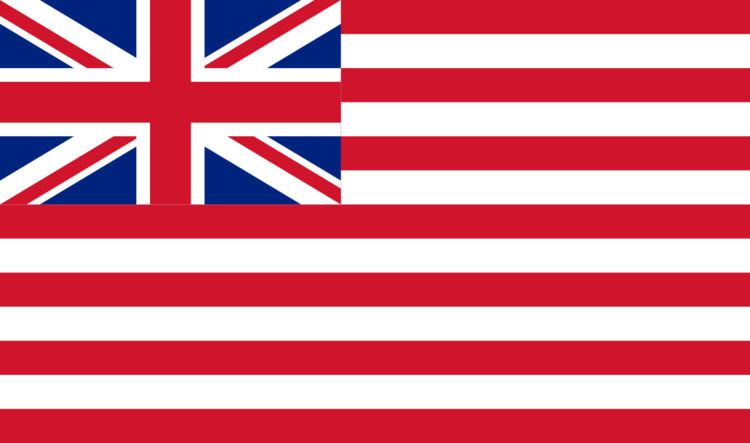Size 44,000 (1876) | Type Command | |
 | ||
Active 1662–1895 (as the Bombay Army)1895–1908 (as the Bombay Command of the Indian Army) | ||
The Bombay Army was the army of the Bombay Presidency, one of the three presidencies of British India within the British Empire.
Contents
The presidency armies, like the presidencies themselves, belonged to the East India Company until the Government of India Act 1858 (passed in the aftermath of the Indian Rebellion of 1857) transferred all three presidencies to the direct authority of the British Crown.
In 1895 all three presidency armies were merged into the Indian Army.
18th century
In the early stages of HEIC rule Bombay was rated as a unhealthy and unprofitable region. Accordingly only a small garrison was maintained while emphasis was placed on creating a local navy (the "Bombay Marine") to control piracy. In 1742 the Bombay Army consisted of eight companies of European and Eurasian garrison troops, numbering 1,593 of all ranks. These had evolved from independent companies dating back as far as 1668 when the Company took over control of the city of Bombay.
By 1783 the Bombay Army had grown to 15,000 men, a force that was still significantly smaller than the other two Presidency armies. Recruitment from the 1750s on had however been expanded to include a majority of indigenous sepoys, initially employed as irregulars for particular campaigns. The first two regular sepoy battalions were raised in 1768, a third in 1760 and a fourth ten years later. The non-Indian (mostly British but also including Swiss and German mercenaries) element was organized in a single Bombay European Regiment. In 1777 a marine battalion was created to serve on the HEIC warships based on the port of Bombay.
In 1796 the Bombay Native Infantry was reorganized into four regiments, each of two battalions. The Bombay Foot Artillery, which traced its history back nearly 50 years prior to this date, was brought up to six companies in strength in 1797.
The Bombay Army was heavily involved in the First Maratha War and the defeat of Tipu Sultan of Mysore in 1799.
19th century
Prior to the cessation of Company rule in 1861, the Bombay Army played a substantial role in campaigns in North-Western India, notably the 1st Afghan War of 1838-1842, the Sind War of 1843, the 2nd Sikh War of 1848-49 and the Persian War of 1856-57. The Bombay Army had acquired responsibility for garrisoning Aden, and The 1st Bombay European Regiment, The Bombay Marine Battalion and the 24th Bombay Native Infantry all won battle honors for service there in 1839.
The Bombay native infantry establishment continued to expand until it reached 26 regiments in 1845. Three Bombay Light Cavalry regiments were raised after 1817, plus a few troops of irregular horse. One brigade of Bombay Horse Artillery comprising both British and Indian personnel had been established by 1845, plus three battalions of foot artillery.
The Indian Rebellion of 1857 was almost entirely confined to the Bengal Army. Of the thirty-two Bombay infantry regiments in existence at the time only two mutinied. After some initial uncertainty as to the loyalty of the remainder, it was deemed possible to send most of the British troops in the Presidency to Bengal, while the Bombay sepoy and sowar (cavalry) units held the southern districts of the North-West Frontier. Some Bombay units saw active service during the repression of the rebellion in Central India.
Post mutiny
Following the transfer of HEIC rule to that of the British government in 1861 the Bombay Army underwent a series of changes. These included the disbandment of three regiments of Bombay Native Infantry and the recruitment of replacement units from the Beluchi population. Originally created as irregular units, the three "Belooch" regiments in their red trousers were to remain a conspicuous part of the Bombay Army for the remainder of its separate existence.
During the remainder of the 19th century Bombay Army units participated in the 1868 Expedition to Abyssinia, the Second Afghan War of 1878-80, and the Third Anglo-Burmese War of 1885-87.
In 1895 the three separate Presidency Armies were abolished and the Army of India was divided into four commands, each commanded by a lieutenant-general. These comprised Madras (including Burma), Punjab (including the North West Frontier), Bengal and Bombay (including Aden).
Composition
Prestigious units of the Bombay Army include the 1st Bombay Grenadiers (now called The Grenadiers) raised in 1784 from grenadier companies of existing regiments, and the Maratha Light Infantry.
Commanders in Chief
Commanders-in-Chief included:
Commander-in-Chief, Bombay Army
Commander-in-Chief, Bombay Command
